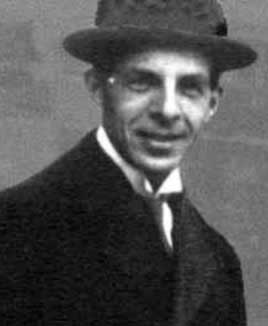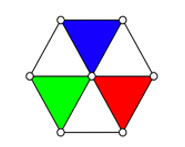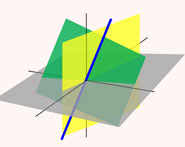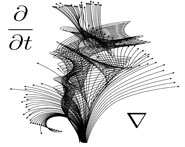


 تاريخ الرياضيات
تاريخ الرياضيات
 الرياضيات في الحضارات المختلفة
الرياضيات في الحضارات المختلفة 
 الرياضيات المتقطعة
الرياضيات المتقطعة
 الجبر
الجبر
 الهندسة
الهندسة 
 المعادلات التفاضلية و التكاملية
المعادلات التفاضلية و التكاملية 
 التحليل
التحليل
 علماء الرياضيات
علماء الرياضيات |
Read More
Date: 20-8-2017
Date: 20-8-2017
Date: 17-8-2017
|
Died: 7 August 1985 in Palo Alto, California USA

Gábor Szegő was born in Kunhegyes, a small town in Hungary about 120 km southeast of Budapest. His undergraduate studies were undertaken in Budapest.
After attending university in Budapest, Szegő went to Berlin where he studied under, among others, Frobenius, Schwarz, Knopp and Schottky, and Göttingen where he studied with Hilbert, Edmund Landau and Haar. He returned to Hungary where he worked under Féjer and Kurschak. He acted as a coach to the young von Neumann.
He enlisted in the Austro-Hungarian cavalry in the First World War and spent some time in the Air force where he met von Mises.
In 1921 he moved to Berlin where he became a friend of Schur and worked with von Mises and Schmidt. He cooperated with Pólya in bringing out a joint Problem Book: Aufgaben und Lehrsätze aus der Analysis, vols I and II (Problems and Theorems in Analysis ) (1925) which has since gone through many editions and which has had an enormous impact on later generations of mathematicians. Pólya wrote of their collaboration (see [2]):-
It was a wonderful time; we worked with enthusiasm and concentration. We had similar backgrounds. We were both influenced, like all young Hungarian mathematicians of that time, by Lipót Fejér. We were both readers of the same well-directed Hungarian Mathematical Journal for high school students that stressed problem solving. We were interested in the same kinds of questions, in the same topics; but one of us knew more about one topic, and the other more about some other topic. It was a fine collaboration. The book Aufgaben und Lehrsätze aus der Analysis, the result of our cooperation, is my best work and also the best work of Gábor Szegő.
In 1926 he moved to Königsberg to succeed Knopp as professor. He stayed there until 1934 when the pressure on him as a Jew forced him to move to the USA where he found a post at Washington University in St Louis, Missouri. In 1938 he moved to Stanford where he remained for the rest of his working life.
Szegő's most important work was in the area of extremal problems and Toeplitz matrices. This work led him to introduce the notion of the Szegő reproducing kernel. From these beginnings he moved to prove a number of limit theorems, now known as the Szegő limit theorem, the strong Szegő limit theorem and Szegő's orthogonal polynomials and on the unit circle.
He produced over 130 research articles as well as several influential books. In addition to the books he wrote with Pólya, described above, Szegő wrote research monographs on his own work. Orthogonal Ploynomials appeared in 1939 and was published by the American Mathematical Society. It has proved highly successful, running to four editions and many reprints over the years. In a collaboration with Ulf Grenander, Szegő wrote Toeplitz forms and their applications which was published in 1958.
Articles:



|
|
|
|
دخلت غرفة فنسيت ماذا تريد من داخلها.. خبير يفسر الحالة
|
|
|
|
|
|
|
ثورة طبية.. ابتكار أصغر جهاز لتنظيم ضربات القلب في العالم
|
|
|
|
|
|
|
قسم شؤون المعارف ووفد من جامعة البصرة يبحثان سبل تعزيز التعاون المشترك
|
|
|